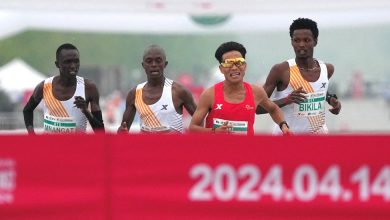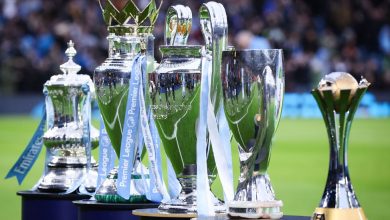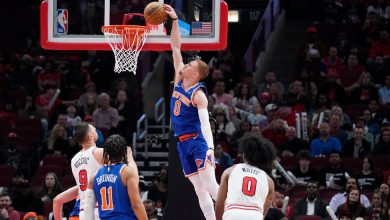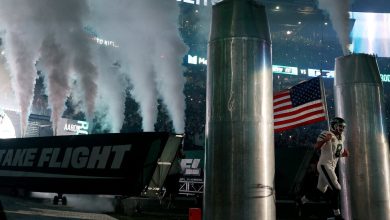The Smaller, Everyday Deals for College Athletes Under New Rules

PITTSBURGH — Dean and Traci Curtis could have been banished from their Ohio State University teams in the early 1990s had they done what their 19-year-old daughter pulled off one Saturday last month.
Emelie Curtis taught a lacrosse clinic for pay — with her status as an athlete at Duquesne University no secret, but instead the selling point for her customers. After two hours of coaching, she came away with about $475.
The payday did not resemble the six-figure totals that some college athletes have commanded since the N.C.A.A., pressured by laws in states like Pennsylvania, loosened rules that had limited players’ financial opportunities for generations. But most college athletes who have been earning money since July are like Curtis: pulling in modest sums on modest stages.
“The biggest misconception was it was only going to help out the big names,” Curtis, a business student with a tuition scholarship, said in an interview before she tutored nearly two dozen girls, most of them in middle school, on power and finesse shots.
“I don’t have a Ferrari,” Curtis, who drives a Honda, said later. “But I’m still happy to be here.”
The era of name, image and likeness, as the concept of college players making money off their fame is known in the industry, was never going to include equal earnings for, or even equal interest among, all athletes. At the University of Pittsburgh, the athletic director recalled over the summer, most football players appeared more eager for a team paintball outing than the preceding briefing on the relaxed N.C.A.A. rules.
But the marketplace’s inaugural months have revealed wide-ranging opportunities for willing college athletes — endorsements on their social media platforms, autograph signings, Cameo messages, reviews of game film for high school prospects, motivational speeches, and meet-and-greets with children, for example — whether they were the University of Miami’s starting quarterback, a hurdler at the University of Central Florida or a far less prominent Division III athlete.
What is similarly clear, according to companies that have helped to broker or administer agreements for tens of thousands of athletes, is that many participating players are not even making $1,000 each.
Athletes are still barred by N.C.A.A. rules from receiving direct salaries for playing sports at their schools, but Opendorse said this week that those with deals that passed through its platform had earned an average of $1,138 since July 1; it did not report a median. INFLCR said its median transaction value since July 1 was $51, and that its average deal was worth $1,306.
Many of the arrangements involve football or basketball players, and the majority of compensation has gone to male athletes. But women’s basketball, Opendorse said, accounted for nearly a quarter of name, image and likeness compensation it had tracked, trailing only football among all sports.
“You’ve got this probably 5 percent of college student-athletes who are getting these bigger paychecks, and then you kind of have the rest who are using the opportunity to make a little extra cash,” said Keith Carter, the vice chancellor for intercollegiate athletics at the University of Mississippi, a Southeastern Conference school where students have earned fees big and small.
“If you have the opportunity to go back and run a clinic or do something innovative your on phone, you should be able to do that like a normal college student,” Carter, a four-year basketball starter at Mississippi in the late 1990s, continued.
Until July, though, N.C.A.A. athletes could have made no such arrangements without risking their eligibility to play sports. Although athletes could hold jobs and sometimes teach private lessons, the association long argued that severe restrictions were necessary to protect amateurism and prevent corruption within college sports. Endorsements were forbidden, as was just about anything that mentioned a player’s school, team or athletic talent.
The simple advertisement on the website of Vantage Sports for the November event starring Curtis would have broken the rules: “Come out and learn with Duquesne University’s Emelie Curtis as she leads an all skills clinic for beginner and intermediate girls.”
Interest soared as the clinic approached at a fitness complex near the Penn-Lincoln Parkway.
By the time the girls began filing into the facility, their coach was ready. She had already spent more than a dozen hours planning the session with an Excel spreadsheet, drawing on drills she had learned as a young player and talking with parents to drum up attendance and scout the skills of the girls who had enrolled.
She even downloaded a whistle app for her phone. (It did not prove all that loud.)
“I kind of thought, ‘Why not me? Why can’t it be me?’” she said. “You’ve put in the work. You know what you have to offer, and as long as you’re confident in what you have to offer, it can take you as far as you want it to take you.”
She knew athletes at Duquesne had pursued other options — one, for instance, had made a deal with a food delivery service — but she had focused on teaching, she said, because she wanted to set an example for younger players. She did not understand how lessons could compromise her integrity as a college athlete.
“I know a lot of people are against it because they see how much money and how crazy the deals are and that’s the only thing that you see on the news,” she said, adding, “This can be such a positive thing for so many, quote-unquote, regular, normal day-to-day athletes who aren’t those big names.”
Although many of the agreements involve students who play in Division I, the N.C.A.A. tier that draws the most public attention and money, athletes who compete in Divisions II and III may also cash in. Opendorse said the average compensation for name, image and likeness participants was $75 in Division II, less than 10 percent of their Division I peers, and $37 in Division III.
“If you want to get it, go get it,” said Shane Bell, a center on the football team at Erskine College, a Division II school in Due West, S.C.
Since July, Bell has made about $525 (and gotten free food) from Mama’s Sweet Shoppe, a local business in his part of Abbeville County, in exchange for appearances and social media posts on platforms like Instagram, where he has nearly 1,900 followers. Wary of a turbulent economy, he said, he has saved what he has made so far.
“I really don’t need it right now,” he said, “but I’m thankful for it.”
Industry officials expect that small-dollar deals will continue to dominate the list of options for most students, though more may start to benefit from team-wide arrangements that could lift earnings for players who draw less individual notice. Some also believe that many students will continue to avoid any deals at all, including group contracts.
“You have a certain portion of our student-athletes who just don’t get involved in this space at all,” Carter said. “They just want to go to class, play their sport, get their degree. I think there’s probably 25 or 30 percent of student-athletes who say, ‘I don’t even want to mess with that.’”
That was not the case in Pittsburgh.
The girls gathered around Curtis as her first clinic drew to a close. She offered praise, a few final pointers and a reminder that she was available for private lessons.
“Whatever you want,” she said, “just reach out.”
Curtis, who ultimately used her earnings for Christmas gifts and some meals, later scheduled two clinics for this weekend and several one-on-one sessions.
Already, her rates have more than doubled.



